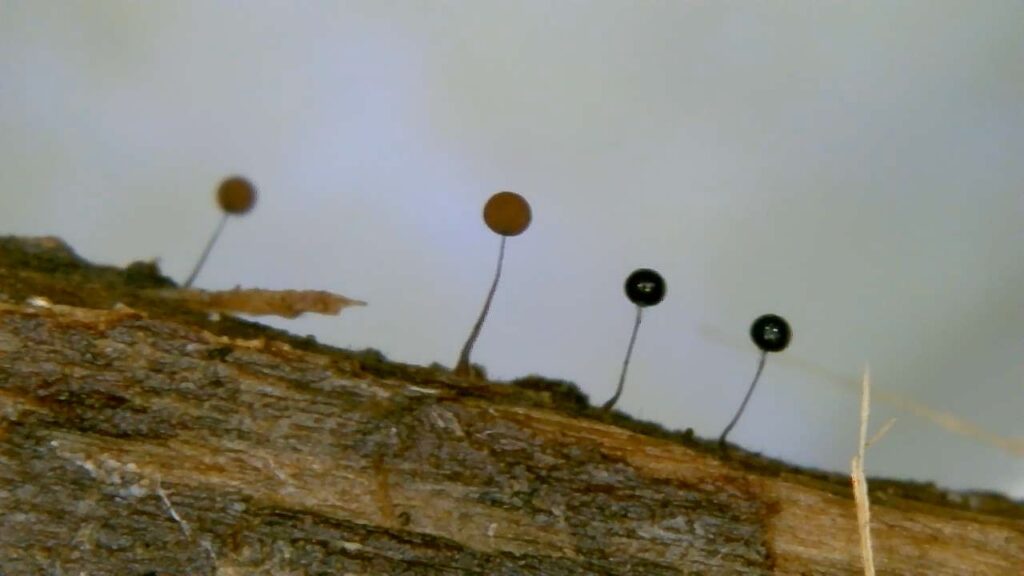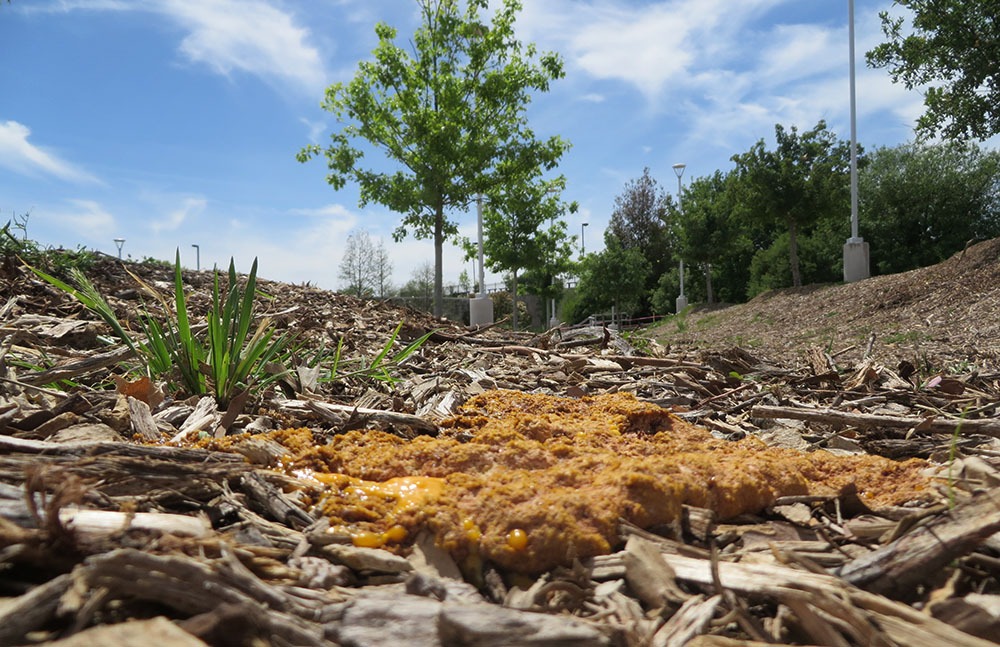Eclipse in the Garden: Recapping Community Science Involvement
Last updated 19 April 2024 History of Eclipses Eclipses have captivated humanity for millennia, with records of their observation and prediction stretching back thousands of
The urban environment is much more diverse than some might suspect. We share our space on planet earth and in urban areas with all kinds of animals, plants, and insects. Even in the heart of a concrete downtown area, life exists and persists. Believe it or not, new species are being discovered in these urban areas still today – some can be seen with the naked eye and some are only micrometers in diameter.
Smaller life forms, such as fungi, myxomycetes, and lichens, are often overlooked and understudied. Researchers at FWBG | BRIT were eager to use the beautiful landscape of more than 100 acres of the neighboring BRIT and FWBG campuses as an outdoor study site to start observing urban tree populations and see what small life forms they could be harboring. What better way to learn more about these organisms than to start looking in our own backyard?
Trees, especially larger and older ones, can support diverse life when they are both living and dead. Both the crevices and surfaces of trunk tree bark on live trees and the decaying process after trees die are ways trees invite different organisms to take advantage of the ecological changes over time. From the base of a tree into the canopy brings a range of species that call a single tree “home.”
Many of us can identify a familiar tree associated with our home, or another pocket of nature in an urban environment. Perhaps you have even climbed a tree sometime in your life! These trees are not only appealing to look at but are also beneficial and necessary for our survival. Urban trees provide us with many ecosystem services such as cooling down the concrete-filled city, filtering the air and water, and conserving energy.
You can use this tool to calculate how much money your trees at home are helping you save: http://www.treebenefits.com/calculator/
Whether a tree is in the deep forest or in a city, the longer it is growing in one spot, the more diverse life forms will develop and start reaping the benefits. Dating back to 2016, the Fungi, Myxomycetes, and Trees Research Team (FMTRT) has discovered a variety of organisms related to living or dead trees across the FWBG | BRIT campus and into just a fraction of Fort Worth’s nearly 300 nature parks.
Listed below are the FWBG | BRIT Staff and Research Associates involved in the Fungi, Myxomycetes, and Trees Program:
Last updated 19 April 2024 History of Eclipses Eclipses have captivated humanity for millennia, with records of their observation and prediction stretching back thousands of

The Texas Native Boardwalk will be grazed by goats for the first time in April 2024 as part of a new land management program at the Garden.

Many Fort Worth and area residents have explored the Garden for years. They may think they know every corner, every path and every tree. In fact, our own Garden holds many surprises. For example, a new species of gall wasp was recently identified on Garden grounds. The story of the wasp’s discovery has much to tell us about the importance of citizen science, the diversity of life around us and the many mysteries waiting to be uncovered in our own backyards.

You don’t need to be a professional to do this experiment. Our own researchers in the Fungi, Myxomycetes, and Trees Research Program use this same

Researchers at FWBG | BRIT Highlight the Importance of Urban Trees with New Species Discoveries The urban environment is much more diverse than some might

This post was written by Vanessa Marshall, 2017 summer intern and student at The University of Alabama. BRIT has been amazing – a catalyst that

And there it was—a myxomycete fruiting body about 30 inches by 22 inches, round like a pancake and filled with spores, found in BRIT’s front

“New Fungi and Myxomycetes in Urban Environments: Use of Live Tree Bark Moist Chamber Cultures” A (Virtual) Lunchtime Lecture by Ashley Bordelon (BRIT), with
FORT WORTH BOTANIC GARDEN
3220 Botanic Garden Blvd
Fort Worth, Texas 76107
(817) 463-4160
Click here to email us!
BOTANICAL RESEARCH INSTITUTE OF TEXAS
We respectfully acknowledge that the Fort Worth Botanic Garden is located on traditional lands of Indigenous Peoples. We honor the ancestry, heritage, and gifts of all Indigenous Peoples who were sustained by these lands and give thanks to them. We are grateful that these lands continue to provide enrichment for many people today. [More…]